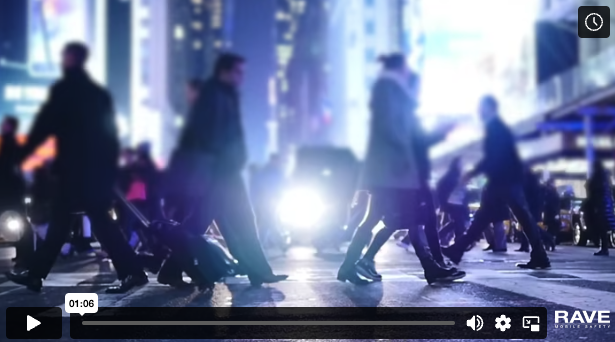Text Notification Systems Are Essential for Critical Communications
Communication is always evolving. From letters to telegrams and phone calls to emails, people have continuously developed new ways to communicate faster. Emails are quick and can be accessed from many devices, so they’re a mainstay of both personal and professional communication. Statistics show that over 4 billion people use email daily. However, email isn’t the only option for fast, reliable communication.
Providing Instant Emergency and Non-Emergency Notifications to Targeted Recipients
In many applications, text notifications offer superior speed and reliability, enabling the sender to provide the recipient with crucial details in a concise format. Additionally, text message notifications tend to be more visible on mobile devices than email notifications. 88% of people use their phones mostly for texting and SMS open rates are as high as 98%.
As such, many schools, government organizations, corporations and healthcare institutions are augmenting their emergency notification systems to include text-based alerts. By adding text functionality to a mass notification system, employers, faculty members and emergency or incident managers can quickly send targeted alerts to recipients in any location, including those who are away from their desktop computers. Text notifications provide unique advantages over many traditional alert methods, making them a crucial component of a robust mass notification infrastructure.
Text-Based Notifications Provide Key Advantages Over Emails and Telephone Calls
To be effective, a mass notification system must allow senders to reach their intended recipients quickly and reliably. Traditional methods such as voicemail, email, and desktop notifications aren’t always practical or available, especially in an emergency situation. Many individuals don’t have access to a traditional landline telephone and may not always answer calls to their mobile devices. Studies show that many people don’t listen to their voicemails, even those left on a work line.
While most people still check their email daily, text messaging is quickly replacing email as the preferred communication method, especially among younger generations. Even with access to email via a mobile device, many people don’t check their inboxes very often. Additionally, most productivity experts encourage people to check their email even less often, which means emergency notifications sent solely via email may not be read in a timely manner. Desktop notifications can be helpful, but only if the intended recipient is actively using their computer when the alert appears.
Text notifications can bridge the communication gaps that many schools, corporations and government agencies experience in their mass notifications systems. The vast majority of Americans (97 percent) own a cell phone, and 85 percent of Americans own a smartphone. In fact, American adults are more likely to own a smartphone than a desktop, laptop, or tablet computer.
Emergency alerts sent via text can reach recipients who are away from their computers; 47% of Americans say they couldn’t live without their devices. Additionally, studies show that people are more likely to read and engage with SMS text messages than with emails. When a timely response is crucial (e.g., requesting a well-being status check after a crisis situation), a text notification will likely be far more effective than a telephone call or email.
Top Benefits of a Text Notification System for Mass Communications
Rave automatically translates messages into over 60 languages, allowing recipients to choose their preferred language for text alerts.
Most users check text messages far more often than emails or voicemails, and they keep their mobile devices with them when away from their desks or home offices.
Employers can send SMS text notifications to targeted groups (e.g., specific roles, remote workers), protecting personal privacy and ensuring the security of internal communications.
Allow visitors, substitute teachers and temporary staff members to opt-in to SMS notifications, enabling them to receive key alerts automatically without requiring hands-on changes to internal contact lists.
Provide users and emergency or incident managers with vital two-way communication tools including text-to-tip, text-from-911 and geo-polling for well-being status checks.
Include vital, time-sensitive details (words, photos or videos) in the body of the text alert, and embed links to provide additional information, instructions or next steps.
Practical Emergency and Non-Emergency Applications for a Text Notification System
A text notification system provides crucial functionality for crisis situations. Incident managers and emergency responders can send SMS texts to inform target groups of an ongoing scenario and provide vital instructions such as shelter-in-place or evacuation orders. A text notification system with two-way functionality allows users to report suspicious behavior in a safe, anonymous way or send an emergency alert during a crisis scenario, such as a medical event or active shooter situation.
However, there are just as many, if not more, non-emergency or operational uses for a mass text notification system. For example, corporations can make use of text messaging to enhance internal communications for annual training reminders, facility closures and scheduling announcements. These are just a few examples of vital communications that are time-sensitive but not emergencies. With Rave Mobile Safety’s text notification tools, employers can choose which groups receive internal communications, limiting distribution to essential recipients to protect sensitive data and reduce “alert fatigue.”
Provide Healthcare Facility Visitors with Vital Information
Healthcare institutions can quickly and securely inform targeted recipients of current policies and procedures, including updates to masking rules or changes in scheduled visitation hours. Opt-in/opt-out functionality allows visitors to sign up to receive crucial alerts during a specific time period without having to provide sensitive personal information or consent to being added to the institution’s database of patients/contacts.
Simplify Internal Corporate Communications
A text notification system provides employers with a simple, efficient way to reach employees with essential internal communications. A concise text notification can remind employees about annual HR open enrollment periods or inform them of important announcements, such as leadership changes. Senders can embed links to provide employees with the option to read additional information without compromising the simplicity of the initial text notification.
Enable Students to Report Suspicious Behavior
With a mobile panic button and tip-to-text functionality, students can use their smartphones to quickly and reliably inform faculty members and emergency responders of a potential crisis or suspicious/dangerous behavior.
Facilitate Non-Verbal Communication with 9-1-1
Communities can increase safety by providing a way for emergency responders to communicate with users in situations where verbal communications are impossible (e.g., limited wireless signal) or ill-advised (e.g., during a domestic violence situation requiring the caller to remain hidden and quiet).
Protect Personnel During Crisis Situations
Corporations can improve emergency preparedness by providing both in-office and remote workers with vital alerts and instructions during a crisis and enabling incident managers to seamlessly coordinate with emergency responders and local officials.
Manage Federal Agency Communications
Federal agencies can utilize Rave’s FedRAMP-certified mass notification system to keep the public informed during an emergency. Develop and maintain a comprehensive communications network to promote both internal and intra-agency collaboration.
Maintain Communication with Remote Personnel
Small, medium and large businesses can ensure remote employees receive vital alerts and time-sensitive messages even when they are traveling or away from their desktop or laptop computers.
Provide Time-Sensitive, Non-Emergency Alerts
Organizations and institutions can provide employees, students, guardians and visitors with critical information via SMS messages, which reach recipients more consistently than emails or voicemails.
Trusted by Thousands of Organizations
Thousands of customers trust Rave to help protect their employees, students, and residents. Our customers include some of the largest communities, most respected companies, and best known colleges and universities in the world.






Customer Success Stories
Text Notification System Frequently Asked Questions
Talk With An Expert
Discover our prepackaged solutions or configure a package that’s right for your community, company, K-12 schools and higher education system. Learn how you can be up and running in days, take advantage of unlimited emergency usage, and benefit from unbeatable performance and customer satisfaction.

